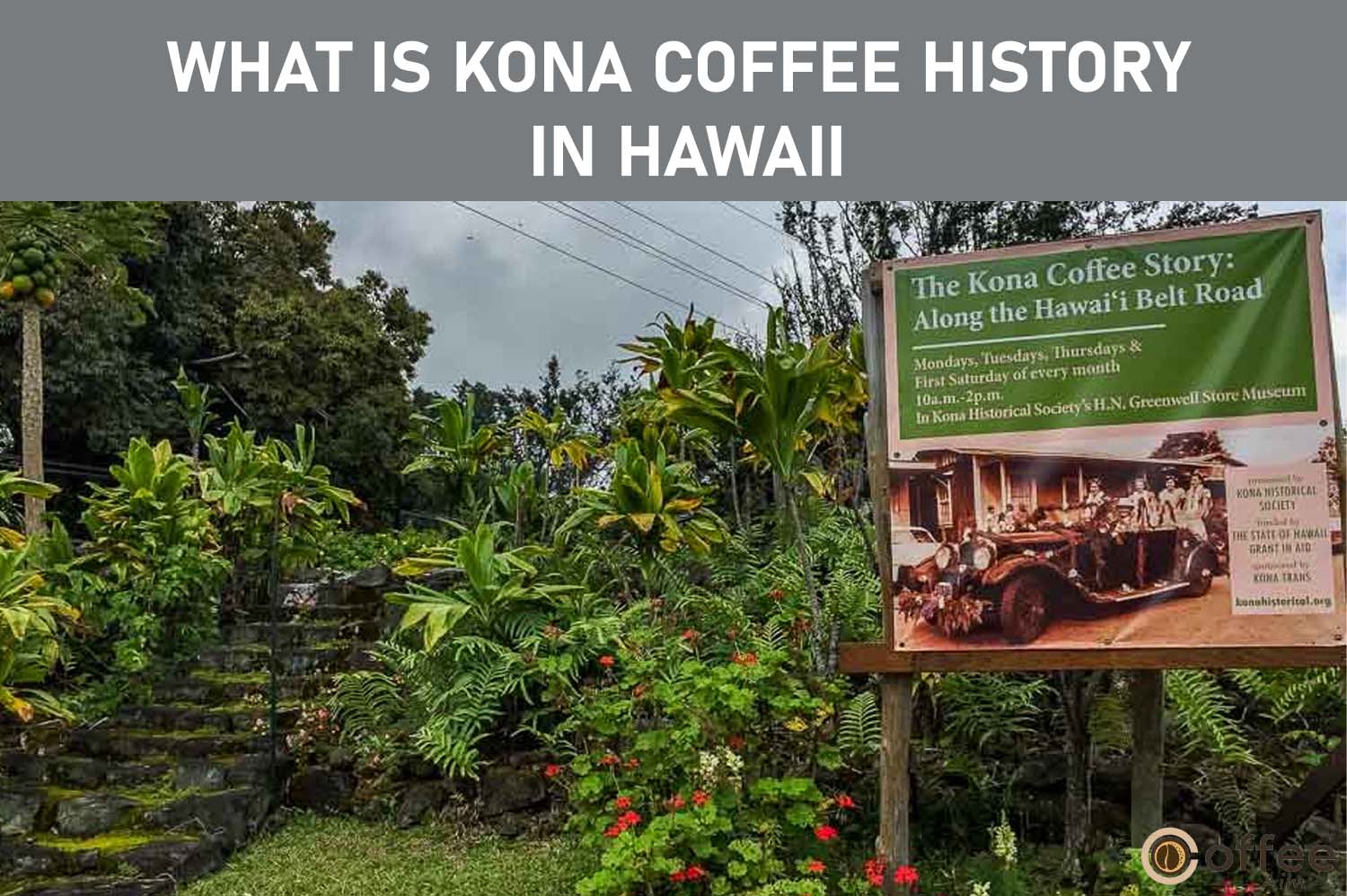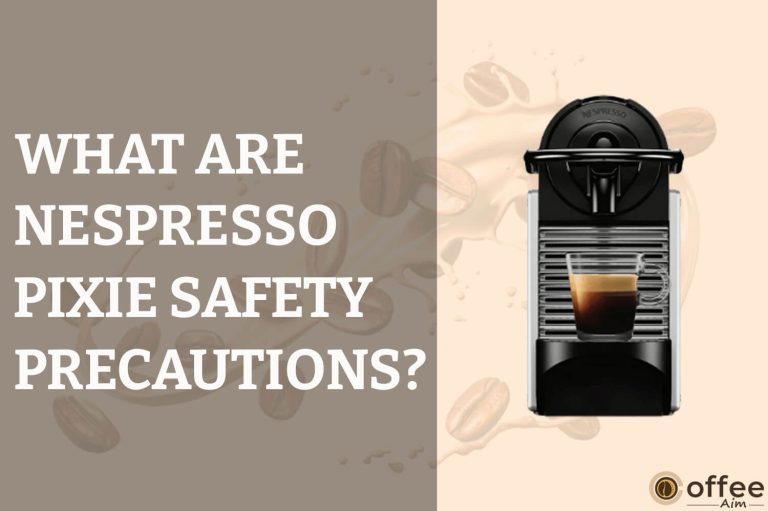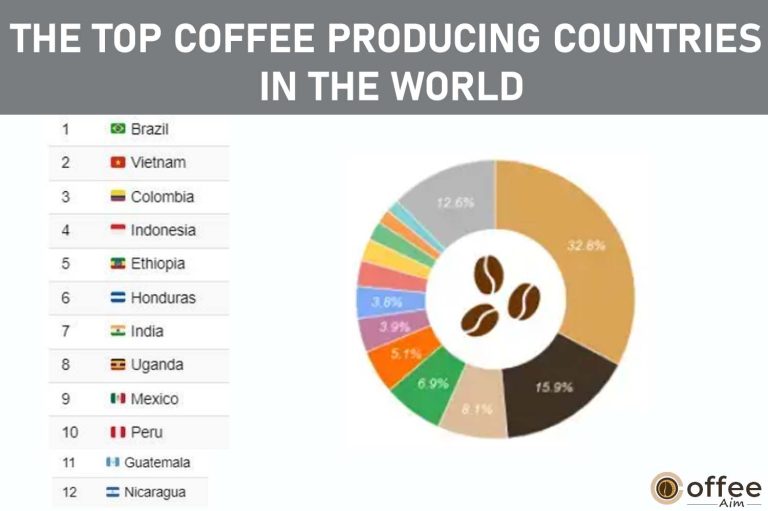
Quick Navigation
No one in the Kona District of Kailua-Kona, Hawaii would have known about coffee if Samuel Reverend Ruggles had brought it from Brazilian cuttings in 1828. And maybe Kona would never become an international brand if Henry Nicholas Greenwell didn’t make it.
If you’re a coffee enthusiast, the best Kona coffee beans are better for your morning brew. But if you are a history lover then this is the article on the Kona coffee region, you are reading. Let’s move ahead.
Who Are The Founders of Kona Coffee in Hawaii?
Samuel Reverend Ruggles and Henry Nicholas Greenwell Are The Founders of Kona Coffee Plantation in the Kona District of Hawaii

Samuel Reverend Ruggles (1795-1871) was in the first Protestant missionary company in Hawaii in 1820. He served first in Honolulu, then in Vemia Kwai, then in Hello, Calvary, and Wamia Hawaii until 1834. He was credited with bringing the first coffee slip to Kona District in 1828.

Henry Nicholas Greenwell (1826 – 1891) was an English merchant who established Kona Coffee as an internationally renowned brand. The original plantations, Henry’s Kona Coffee Living History Farm, and his Greenwell Store, have now been turned into a museum and historical center, that are open to the public, allowing you to discover tales of the ancient millers, roasters, and Kona coffee pickers.
Where is Kona Coffee Grown?–What is Kona Coffee Region?
“Kona” is a district on the largest island of Hawaii in the state of Hawaii. Hawaii Island’s Kona District is known worldwide for its famous 100% Kona Coffee. Another reason district Kona is famous in the world is that it is the venue for the Ironman World Championship Triathlon. But this is not our topic here, so let’s leave it at that for another time. Kona District is divided into North Kona District (Kona ‘Akau) and South Kona District (Kona Hema). Towns in the Kona district include Kailua-Kona, Kealakekua, Keauhou, Holualoa, Hōnaunau, and Honalo.
What is Kona Coffee?
Kona coffee is grown on the slopes of the Hualalai and Mauna Loa Mountains in the north and south of the Kona District of Hawaii. By the way, coffee is grown in seven parts of the state of Hawaii, but all the coffees have different names, but the name Kona can only be labeled as the coffee that is grown in a specific area of the Kona district.
Kona Coffee Region–The Present Coffee Grown Condition
Composed of more than 900 farms clustered around the Kona region, ranging in elevation 3800 acres, producing more than 20 million pounds of coffee cherries, gaining more attention of the coffee industry than ever before. Most coffee farms are less than five acres and are operated by individual Hawaiian families, but they account for about 95% of all coffee produced on the Big Island.
Kona’s Weather and Fertile Relation With Coffee
The chemistry of Mineral-rich volcanic soil of the 20 miles stretches of land on the western slopes of Hualalai and Mauna Loa volcanoes of “Kona” district of Hawaii, with the weather of sunny mornings, clouds and rain in the afternoon, little wind, and mild nights combined with porous create favorable coffee growing conditions.
What makes the Kona region unique
The Kona coffee belt in district Kona of Hawaii Island is unique for its rich volcanic soil at a high elevation in the area’s characteristically wet and dry tropical climate. In addition to it has also a unique advantage over most other types of coffee grown in other countries such as Indonesia and Vietnam
What better time to visit the Kona district to see the red ripe cherries of Kona coffee?
At the end of August! If you love coffee so much that you want to see ripe red cherries on the trees with your own eyes and see how they are picked from the trees and how they are picked and dried, you can visit the Kona coffee gardens in the Kona region in late August. And, if you just want to see the Kona coffee cherry blossoms then you visit in January or May. Because Kona coffee trees bloom every January and May. During these months, small white buds bloom on the Kona coffee trees, which the locals call “Kona Snow”.
It is really a beautiful sight, amazing! Their fragrant scent pleases your mind. After a while, the flowers melt, leaving behind green cherries with Kona beans. These green cherries ripen in the summer months. The perfect dark red color is a sign of their ripening. So when they reach their perfect color, they are picked up by hand.
How is Kona Coffee Picked Dried and Made?
This process takes place in late August when the Kona coffee cherries ripen and turn deep red. But this process is very complicated. Only well-trained pickers can pick up Kona coffee cherries from the trees. The problem is that not all cherries ripen at the same time but only ripe cherries are picked from bunches. Coffee cherry pickers have to walk around the Kona coffee trees dozens of times to pick ripe cherries. Even full ripen Kona coffee cherries are picked. The coffee cherries are then spread out in the sun, either on large concrete or brick patios. The coffee cherries are raked or turned by hand to ensure even drying and prevent mildew.
Once the beans are dry, they are ready to sift, sort, grade, and prepare. Here we have a detailed guide for you on coffee cherry beans, you must read.
What Does Kona Coffee Taste Like?
Amazing taste! Imagine what you would say if you had a combination of milk, chocolate, honey, and fruit in your mouth at the same time. This is the taste of Kona coffee. If you want to know more about the taste of Kona coffee then be sure to read our guide “Kona coffee taste”
Is Kona The Only District in Hawaii State Which Grows Coffee?
Hawaii is famous around the world for its Kona coffee, but it is not the only region of Hawaii where coffee is grown. There is a total of seven coffee-growing regions in Hawaii including the Kona district. The other Hawaiian coffee regions include Ka’u, Hamakua, Puna, Maui, Kauai, and Molokai.
Timelines of The History Of The World Famous Kona Coffee
The Early Years Of Kona Coffee (1828 – 1860)
1817– Don Francisco de Paula Marin brought coffee crops to Hawaii, but his plantings failed.
1825–Chief Boki, the governor of Oahu, brought Coffee plants from Brazil and successfully planted them in Manoa Valley.
1828–An American missionary, Reverend Samuel Ruggles, carried some fledgling coffee plants from Oahu to the Kona region, particularly in the Hills of Mauna Loa and Hualalai.
1849–The California Gold Rush provided a bonus for all of the big island’s agricultural products, and the developing coffee industry of Hawaii reaped the privileges.
Kona Coffee Breaks Through (1860 – 1914)
1850–Henry Nicholas Greenwell came to Hawaii and opened his own retail shop in the heart of the Kona district. Greenwell brand has developed a reputation of consistent quality for Kona coffee.
1873–Kona coffee’s first big breakthrough came to existence when Kona trader Henry Nicholas Greenwells coffee was awarded at the World Exhibition in Vienna an award for excellence, which gave some recognition to the Kona Henry Havelock. It was the first hint that Kona coffee might be something special.
1876–Greenwell coffee was part of the centennial exhibition in Philadelphia, Pennsylvania.
1892–Hermann Widemann introduced the ‘Guatemalan’ coffee variety to big island Hawaii, which is now known as ‘Kona Typica’.
Wartime Influences (1914 – 1960)
1914–First World War revitalized Kona coffee’s demand skyrocketed.
1920–Brazil destroyed much of its coffee crop by an unexpected frost, leading to a worldwide shortage, which increased demand for alternative sources like Kona.
1929–The Great Depression began. Wall Street went into a panic and wiped out millions of investors. Bankruptcies soar in nearly every sector of the economy, and coffee was no exception.
1939–Kona was the only remaining region on the big island that still farmed coffee.
1939 – 1945–In The Second World War the necessity to fuel desperate soldiers on the front lines increased in demand for coffee, which rebounded the Kona coffee industry.
1953–Brazilian crop destroyed again by a freak frost which increased the demand for its alternative sources like Kona.
The Modern Era (1960 – Present)
1970–More farmers had chosen to operate independently, thus the cooperatives controlling Kona’s production lost their monopoly.
1980–Customers developed an appreciation for specialty coffees. This emergence of second-wave coffee enhances the value of Kona coffee beans.
1991–A law passed by Hawaiian Agriculture Authority allowing beans marketed as “Kona blends” to contain as little as 10% Kona coffee. The coffee industry diversified by the law, and various Kona coffee grades were created. This change gave rise to the niche market for 100% Kona coffee beans, which provides some of the best Kona coffee brands.
Final thoughts
The coffee industry in Hawaii has emerged as a successful agricultural product in the last two centuries, seeing the economic turmoil. And now with Kona Coffee, one of the most prestigious coffee beans on the planet right now, its future looks bright.
FAQs
What Makes Kona Coffee So Special?
The specialty of Kona Coffee is that the region of Kona District has high mountains, volcanic soil, setting sun, evening rains, sunny mornings. All of these things combine to create a specialty that makes the Kona coffee so special.
Retrieved from
https://upload.wikimedia.org/wikipedia/commons/2/25/Samuel_Ruggles.jpg
(https://archive.org/details/portraitsofameri00hawarich/page/6/mode/2up)
https://en.m.wikipedia.org/wiki/File:Henry_Nicholas_Greenwell.png
https://www.huladaddy.com/articles/how-typica-is-your-kona.htm
Ryan, C. (2017, June 27). On An Island: Hawaiian Coffee’s Tricky Price-Quality Relationship. Retrieved from https://www.baristamagazine.com/hawaiian-coffees-price-quality/

![What Does Kona Coffee Taste Like? [A Deep Dive Guide]](https://coffeeaim.com/wp-content/uploads/2021/04/What-Does-Kona-Coffee-Taste-Like-A-Deep-Dive-Guide-768x511.jpg)




